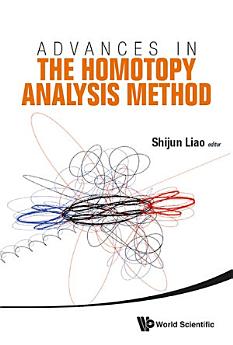Advances In The Homotopy Analysis Method
Shijun Liao
พ.ย. 2013 · World Scientific
5.0star
1 รีวิวreport
eBook
428
หน้า
family_home
มีสิทธิ์
info
reportคะแนนและรีวิวไม่ได้รับการตรวจสอบยืนยัน ดูข้อมูลเพิ่มเติม
เกี่ยวกับ eBook เล่มนี้
Unlike other analytic techniques, the Homotopy Analysis Method (HAM) is independent of small/large physical parameters. Besides, it provides great freedom to choose equation type and solution expression of related linear high-order approximation equations. The HAM provides a simple way to guarantee the convergence of solution series. Such uniqueness differentiates the HAM from all other analytic approximation methods. In addition, the HAM can be applied to solve some challenging problems with high nonlinearity.This book, edited by the pioneer and founder of the HAM, describes the current advances of this powerful analytic approximation method for highly nonlinear problems. Coming from different countries and fields of research, the authors of each chapter are top experts in the HAM and its applications.
การให้คะแนนและรีวิว
5.0
1 รีวิว
ให้คะแนน eBook นี้
แสดงความเห็นของคุณให้เรารับรู้
ข้อมูลในการอ่าน
สมาร์ทโฟนและแท็บเล็ต
ติดตั้งแอป Google Play Books สำหรับ Android และ iPad/iPhone แอปจะซิงค์โดยอัตโนมัติกับบัญชีของคุณ และช่วยให้คุณอ่านแบบออนไลน์หรือออฟไลน์ได้ทุกที่
แล็ปท็อปและคอมพิวเตอร์
คุณฟังหนังสือเสียงที่ซื้อจาก Google Play โดยใช้เว็บเบราว์เซอร์ในคอมพิวเตอร์ได้
eReader และอุปกรณ์อื่นๆ
หากต้องการอ่านบนอุปกรณ์ e-ink เช่น Kobo eReader คุณจะต้องดาวน์โหลดและโอนไฟล์ไปยังอุปกรณ์ของคุณ โปรดทำตามวิธีการอย่างละเอียดในศูนย์ช่วยเหลือเพื่อโอนไฟล์ไปยัง eReader ที่รองรับ




